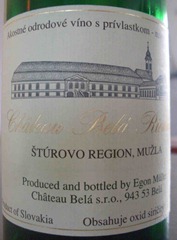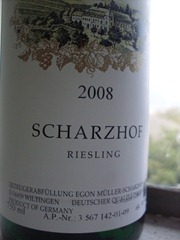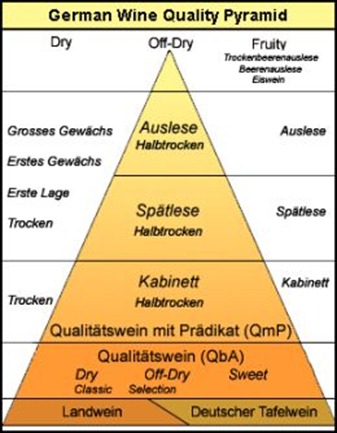Caroline“Where the fuck is that bloody waitress,” I shouted at no one in particular, “of all the days to be late she fucking decides today. Fuck.” I was running late for a fine wine workshop at the One & Only and I had to wait for the waitress to arrive before I could leave. She arrived at 11:50 – the tasting was supposed to start at 12 sharp – I gave her a withering look, I hoped it was withering anyway, but I’m not sure she picked it up through the glazed eyes and torpor of her breakfast joint.
I shouldn’t have worried though, this is Cape Town after all, and I have yet to attend a function that has started promptly. After leaving my keys with the valet I found my way to the board room where the tasting was to be held. An amusing aside: In my haste to get to the tasting I pocketed my keys, so for an hour and a half a perturbed One & Only staff searched for the owner of a very dirty Citi Golf so it could be moved and stop blighting the hotel’s entrance.
The tasting was part of the One & Only’s Birthday celebrations, and in collaboration with Jorg Pfutzner of Fine Wine Events they had brought out four wine makers from Germany, Austria, Burgundy and Portugal. So instead of a large tasting like the Sauvignon Blanc one I attended recently, this would consist of each winemaker giving a 60-90 minute talk alongside the tasting of the wines.
After the croissants had been devoured, the coffee imbibed, and the weather, harvest, and the other typical small talk topics had been exhausted we all found our seats in the conference room. My tasting partners for the day were Caroline Rillema of Caroline’s Fine Wines, and Carolyn Martin of Creation Wines. Our opinions on most of the wines that were in accordance, except for the White Burgundies, I liked them, they didn’t.
First up was Egon Müller the wine maker of the of the family owned Scharzhof estate in the Mosel valley. The famous Scharzhofberg vineyards are regarded as some of the finest in Germany and have been in the Müller family since the 18th century, but were founded during the Middle Ages.
In the first flight we tasted three Rieslings from three different countries: the 2008 standard Riesling from Scharzof, the 2009 Kanta made in Adelaide Hills in Australia, and the Chateau Bela 2008 from Slovakia. The Bela had a steely start with a hint of lime that gave way to an almost creamy texture. After a while in the glass a honey-comb aspect started to emerge.
Australia, and the Chateau Bela 2008 from Slovakia. The Bela had a steely start with a hint of lime that gave way to an almost creamy texture. After a while in the glass a honey-comb aspect started to emerge.
Not having tasted other Australian Rieslings I cannot say how different The Kanta 2009 is to the norm, but apparently it is. Müller said that he wanted to see whether a European approach could work in an Australian environment. The wine has a limey weight on the nose that extends to flinty gun smoke. It is fresh and precise on the palate with a hint of litchi and lime that ride over the stony undertones.
 My favourite of the flight was the German version; bright and flinty it had a slightly sweeter entry that marched sternly through my palate with a smile on its face. It was taut and minerally with a delicious, if fleeting, touch of wheat as it disappeared. The wine had superb balance; the image in my mind was of a slender wheat stalk balancing on the edge of a knife.
My favourite of the flight was the German version; bright and flinty it had a slightly sweeter entry that marched sternly through my palate with a smile on its face. It was taut and minerally with a delicious, if fleeting, touch of wheat as it disappeared. The wine had superb balance; the image in my mind was of a slender wheat stalk balancing on the edge of a knife.
My notes are full of these descriptions as I found many of the wines easier to picture than taste. I guess it is because in South Africa we have far more fruit forward wines; the flavours are more obvious and therefore easier to pinpoint and declare. As the day progressed I found myself thinking of the wines as poised, subtle, controlled, lurking, pacing, rather than the simple listing of various fruits and flavours. I think Dirk Niepoort summed it up perfectly for me later when he said that he “prefer[s] wines that you have to jump into the glass to find rather than the other way round.” And goodness, did I have to do some jumping.
The next flight was more serious as we moved to vineyard specific Rieslings and some aged examples. These wines came from older vineyards, some of which are ungrafted and date back to the 19th century. Müller said that when he presents tastings he always likes to bring an aged example so that people can experience the joys of older Rieslings. I’m not sure if he used the word joy, but he should have; by the end of the flight I was damn near dancing for it.
The wines we tasted fell into the Prädikatswein category in the German wine classification system. This is the category that holds the highest quality German wines, where chapatilization (the adding of sugar to unfermented grape must to increase alcohol) is not allowed and other prerequisites need to be met. Find more at Wikipedia or here. Within the Prädikatswein the wines are divided into levels of ripeness. We tasted four, each having a different level of ripeness. .
Pay attention you’re being schooled.
The Kabinett, a wine whose grapes have been harvested fully ripe during the main harvest, around September, and is generally semi-sweet, was the 2007 Scharzhofberger. It had that typical turpene Riesling nose and a little ripe Jack-fruit – which was the first time in my life that that smell has ever been a positive one. A little like a garbage bag that has been in the sun. Only a whiff mind you; it was in the company of wet stones and a touch of lime. The palate was creamy and rich with the acidity cleaning the palate like a receding wave on a sandy beach.
The Spatlese – where grapes are harvested later and are therefore over ripe – was a 1995 Wiltinger Braune Kupp Spätlese. (Fuck, I feel fancy just typing that out – say it with an accent and you will too) It was rich and soft with a slight turpene edge underneath a honeyed nose, with hints of dried fruits. It started broad in the palate and then was reigned in. Gentle and balanced. I love Rieslings for their cleanness, and despite their sweetness – this one was around 35 grams of residual sugar per litre – they are wonderfully refreshing.
Moving up in the ripeness scale we had the 1999 Scharzhofberger Auslese – picked very late the ripeness is concentrated by botrytis. A deep nose of turpene and flint, with whiffs of apricot and dried fruits. The palate was dense and concentrated but that the same time dainty and light. Again the lightness and refreshing nature of these wines that have such concentration and sweetness flabbergasts me. It was pretty easy to see why Egon Muller is famous for these types of Rieslings.
But none so far were as expensive as the last. It was the 1983 Scharzhofberger Beerenauslese – a Beerenauslese has been made from individually selected grapes infected by botrytis. According to Jorg this wine, from an outstanding vintage, can fetch up to R20 000. Would I drop twenty grand on a bottle of Riesling? I’m not sure. My two sips or so cost around R600. What struck me first was the weight on the nose; there was a density to it; complex with some waxy almond aromas among honeyed notes, as well has very faint dried mango and apricot. The palate was taught and nutty with the fruit following through. I also picked up a hardness underneath it all, like water running down slate. It was balanced, complex, rich, yet light. I underlined two words in my notes that sums this wine up well I think: Rich and Pure. Which is a rare combination. Rare enough to justify R20 000. Well, not with my bank account looking the way it is.
Next up are the incredble Grüner Veltliners of Michael Moosbrugger,

Jealous is the word! I was training WOSA students for my sins that day 🙂